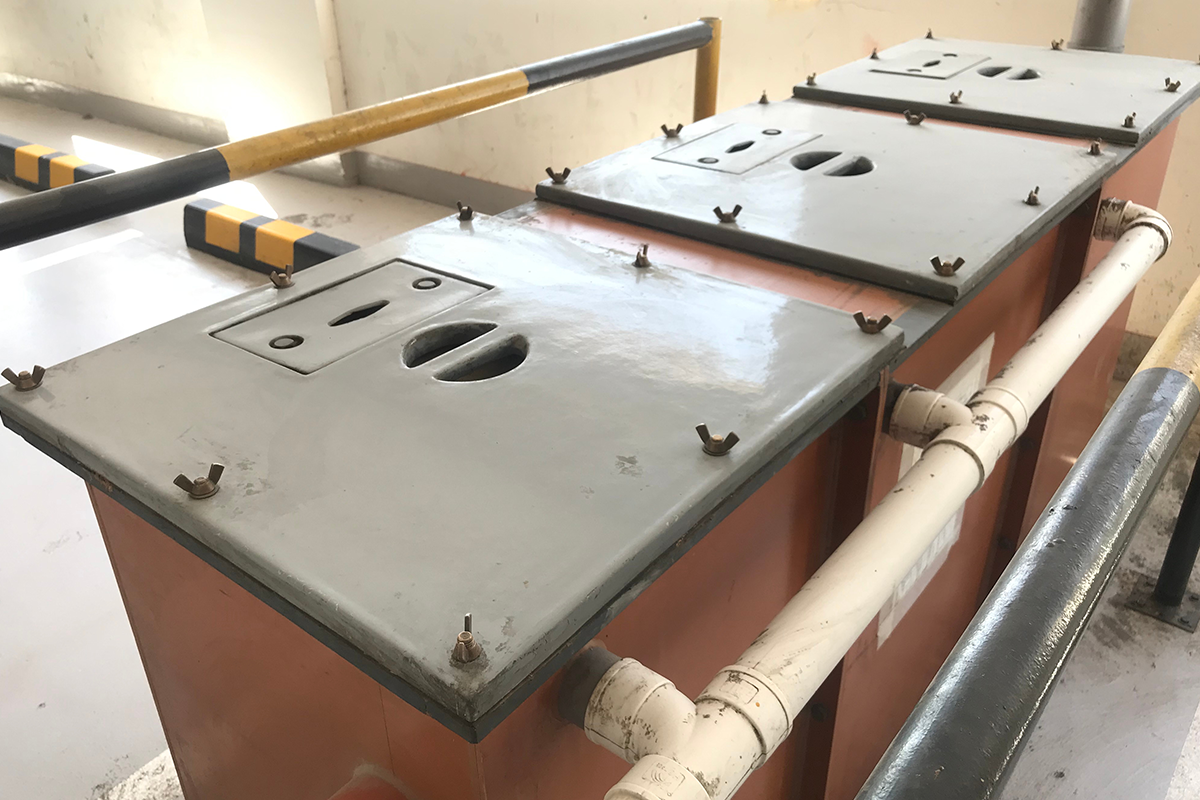Cooking generates a great deal of dirt and waste, especially liquid waste. In addition to being gross, unchecked waste accumulation can result in serious and expensive problems if not dealt with.
In addition, it can clog the sewer systems in the neighborhood and create problems at local water treatment facilities. So pouring FOG down the drains and affecting everyone’s sewer system is an extremely bad idea and unnecessary.
You can easily remove FOG in the home by pouring it into an empty can or jar, but larger-scale establishments find it more difficult. This is where grease traps/grease inceptors and grease trap pumping in Charlotte, NC, can be useful.
What is a Grease Trap?
The grease trap can be described as a plumbing device that captures the FOG that enters the water system. They are constructed to collect the oils, fats, and grease collectively referred to as FOG. They are then disposed of before the waste goes through the drains and is prevented from entering the public sewer system or the septic tank.
There are two main kinds of grease traps: Exterior and interior traps. The traps inside the kitchen sink can hold fewer quantities of FOG. Outside traps are outside the structure and are massive, with hundreds of gallons. They are integral to many food services and restaurants’ grease trap cleaning in Augusta, GA, sanitation systems.
Many cities require grease traps in commercial kitchens due to their crucial importance in preventing expensive sewer issues. Grease traps are available in various dimensions based on the amount of waste your company will generate.
The air-intake valves in the commercial grease trap cleaning in Columbia, sc prevent the backpressure and keep the baffles in the right place. They are typically located on the outside or inside of the building. Typically, the water flows through the sewage system, and fat solids are absorbed into the tank’s base.
What is The Purpose of a Grease Trap
The discarded food solids, including grease and oils produced by large institutions like cafeterias, schools, cafeterias, and restaurants, are significantly higher in frequency and volume. If unchecked, food waste could end up being deposited in sewer pipes and cause problems for the sewer system, including:
- Nasty odors
- Blocked sewers and drainpipes
- A restricted flow rate of wastewater
To stop these issues from occurring, it is essential to have specialized equipment installed. The device in question is an interceptor for grease or a grease trap (these terms are interchangeable).
Health inspectors generally check that large facilities contain grease traps (or grease inceptors) placed on their premises and how they take up grease trap cleaning in charlotte, NC.
The different types of grease traps
Hydromechanical Grease Traps.
The traps are located close to the fixture or at the point of use. The grease is extracted using baffles and a vented flow control device, which takes advantage of the waste stream’s air. During the cooling process, grease hardens on the surface of the wastewater. The grease in the trap remains after the water is pushed out into the sewer. These devices require regular manual grease trap cleaning in rock hill, sc, because grease accumulates in the traps with every use.
Automatic Grease Removal Units (AGRU).
Depending on their size, AGRUs can be placed at the fixture or can cover a whole restaurant, making them more versatile and efficient. Unlike the passive grease traps above, these traps use a skimming blade to collect grease outside, so there is no need for grease trap pumping in Augusta, ga. The grease is virtually all removed when these devices are used.
Gravity grease traps
A gravity system usually consists of large concrete, fiberglass, or steel tank buried in the ground. A gravity trap works very much the same as a passive hydromechanical trap but must be pumped out regularly by a grease management company. The capacity of these pumps is much greater, and they are a better choice for applications requiring high flows.
Why You Must Regularly Clean Your Grease Trap
Since your grease trap is likely always filled with cooling oils and fats, which turn into solids, there’s an enormous chance for it to be sucked up and trapped inside the device. It’s simple to comprehend how your grease trap could be blocked up in no time!
If the grease trap is blocked, the accumulation of waste materials could cause your kitchen sink to overflow and cause additional problems with your plumbing.
But you might need grease trap cleaning in Greenville, sc, ahead of time when you’re busier than other establishments. There are indicators that this is required for you. This includes:
- Sink drainage that is slow due to gunk buildup can quickly lead to bigger problems as the water has a smaller area to drain.
- Fat and oil buildup causes foul odors.
- Gurgling, growling or other noises from your drains may indicate that your sink waste has become clogged.
Conclusion
A commercial kitchen’s traps fill up quickly when you work there. Oils, fats, and grease cool quickly and solidify! You must call for assistance when filling up the kitchen’s first tank. Your establishment will be in serious trouble if an official discovers that your kitchen is unhygienic. Call a professional for grease trap cleaning in Greenville, sc, as soon as possible!
With GE Biofuel, fats and food particles are prevented from flowing out grease traps and blocking pipes and trenches. The baffles keep the solids from flowing through the outlet pipe because fat is lighter than water and floats at the top of the tank. During our standard grease trap pumping in Charlotte, NC, service, we will check your system for issues and arrange maintenance if necessary.

